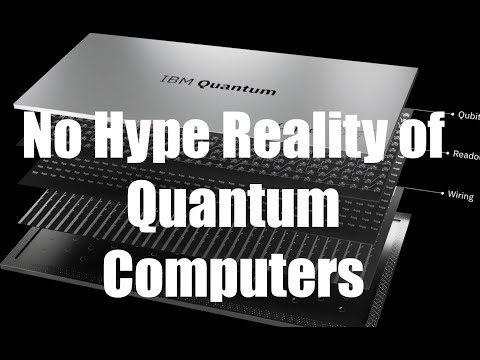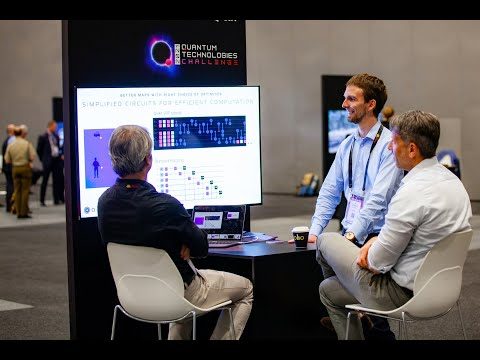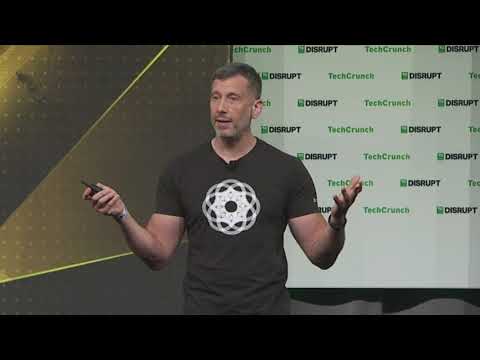I have been following quantum computers closely for over two decades and I spent the last few days meeting with many of the major quantum computer companies, listening to talks and presentations and hearing from representatives of several governmental agencies and groups at the Q2B conference (Quantum to Business) .
I have reduced this information into a few key points so people can understand where things are at and where they are going.
Will Quantum Computers deliver value in the future?
How much value is possible in the near term?
What are the usable qubit levels now ?
How do quantum computers compare to regular supercomputers now?
Are we transitioning a different phase?
What will a company need to do to prepare to get value from quantum computers?

I looked at dozens of presentations and hundreds of slides. This is a critical graph that explains a lot about where things are at with quantum computers. You have to spend some time looking at this graph. On the X, horizontal axis, you see the qubit counts. On the Y, vertical axis, you see the probability of getting a successful answer. Below 8 qubits you are look at about 10% chance of success.
At 12-13 qubits you are looking at 0.1% chance of success in getting answers.
The new Fire Opal, AI and Hardware aware mapping of good qubits. This system of error suppression lets the chance of success with 16-24 qubits reach 10% chance of success instead of being less than 0.01% (1 in 10,000). Below are examples of finding the right answer. The right distribution of answers is on the left and what is found is on the right. Initially without Fire Opal, the correct distribution cannot be found in the sea of error and noise.

But with Fire Opal managing the interaction with the qubits of the quantum hardware, we can visually see that we are getting something far closer to what actually exists.




Q-ctrl has online courses via Black Opal for about $20/month. Someone committed could get through the material in about one year to get a certificate that could enable them to be usefully employed in the Quantum computing industry.
I will be making other articles to go over more of what is and will be happening with quantum computers. There aree several promising approaches which could enable the industry to have breakthrough advances.
We are currently in the phase of research learning and discovering and some of the research is enable quantum and physics inspired approaches using analog and classical computing to achieve better and useful results. The effort and challenge in attemping to solve quantum computing at scale is giving spinoff scientific benefits. Some of these new insights are valuable.
We are shifting from a lot of work at 1-15 qubits and some work at 25 qubits or so and a few experiments and attempts with large qubit systems. We are entering a phase where there is regular and useful work at 15-25 qubits. There are also regular supercomputers simulating quantum systems. This is happening at 39 qubits. However, the 39 qubits are supercomputer resources. It is easier and cheaper to access the small real quantum systems. There needs to be a lot of work perfecting algorithms and other methods with the cheap smaller systems before large scale runs are attempted on expensive hardware. It is like doing work on computer server workstations before trying on the supercomputer.
There is also a lot of exploration and study around the questions. We want to know what are the real good questions and how can we break down the questions using human analysis so that only the really hard part that needs real quantum is done on real quantum. We can try on regular computers and on the ‘fake quantum’ simulation systems.
When we finally get the breakthroughs then there will be a mix of very large systems. 300+ qubits photonic annealers, 1000+ qubits on superconducting systems, perhaps thousands and millions of qubits and all will different levels of error mitiation, error suppression and perhaps error correction. Even when the hardware arrives, we will still be using all of the tools to understand and verify really hard problems, determining the questions and the right way to go about attacking those questions and possible answers.
There will be cost and benefit tradeoffs and value analysis all along the way.
It is like sequencing the genome. It cost $3 billion initially but then it has come down to $100 and become more accurate. It took decades. Then we had to learn how to use the data and turn it into information and then get insights and then get results.
It is also like cracking the WW2 nazi Enigma code. You have thousands of code breakers at Blechly and really smart people working on cracking the problem and advancing understanding over years and figuring out how to make the problem more tractable.
If the problems are not extremely hard and extremely valuable then there would be no point and no need for quantum computers.
There is an estimate that nature quantum computer industry could be worth $850 billion per year which is 20 times more than the $40 billion high performance computer industry. However, this number is a guess. Who knows what is the value when you can solve big questions that are impossible to answer now?
Those who say that Quantum computers are all hype and that this Quantum Computing effort will fail are wrong. Amazon, IBM, the US Air Force research lab and many others have the resources and patience and staying power to keep working these problems and have the motivation and see value in the learning and the journey and effort.



Brian Wang is a Futurist Thought Leader and a popular Science blogger with 1 million readers per month. His blog Nextbigfuture.com is ranked #1 Science News Blog. It covers many disruptive technology and trends including Space, Robotics, Artificial Intelligence, Medicine, Anti-aging Biotechnology, and Nanotechnology.
Known for identifying cutting edge technologies, he is currently a Co-Founder of a startup and fundraiser for high potential early-stage companies. He is the Head of Research for Allocations for deep technology investments and an Angel Investor at Space Angels.
A frequent speaker at corporations, he has been a TEDx speaker, a Singularity University speaker and guest at numerous interviews for radio and podcasts. He is open to public speaking and advising engagements.








